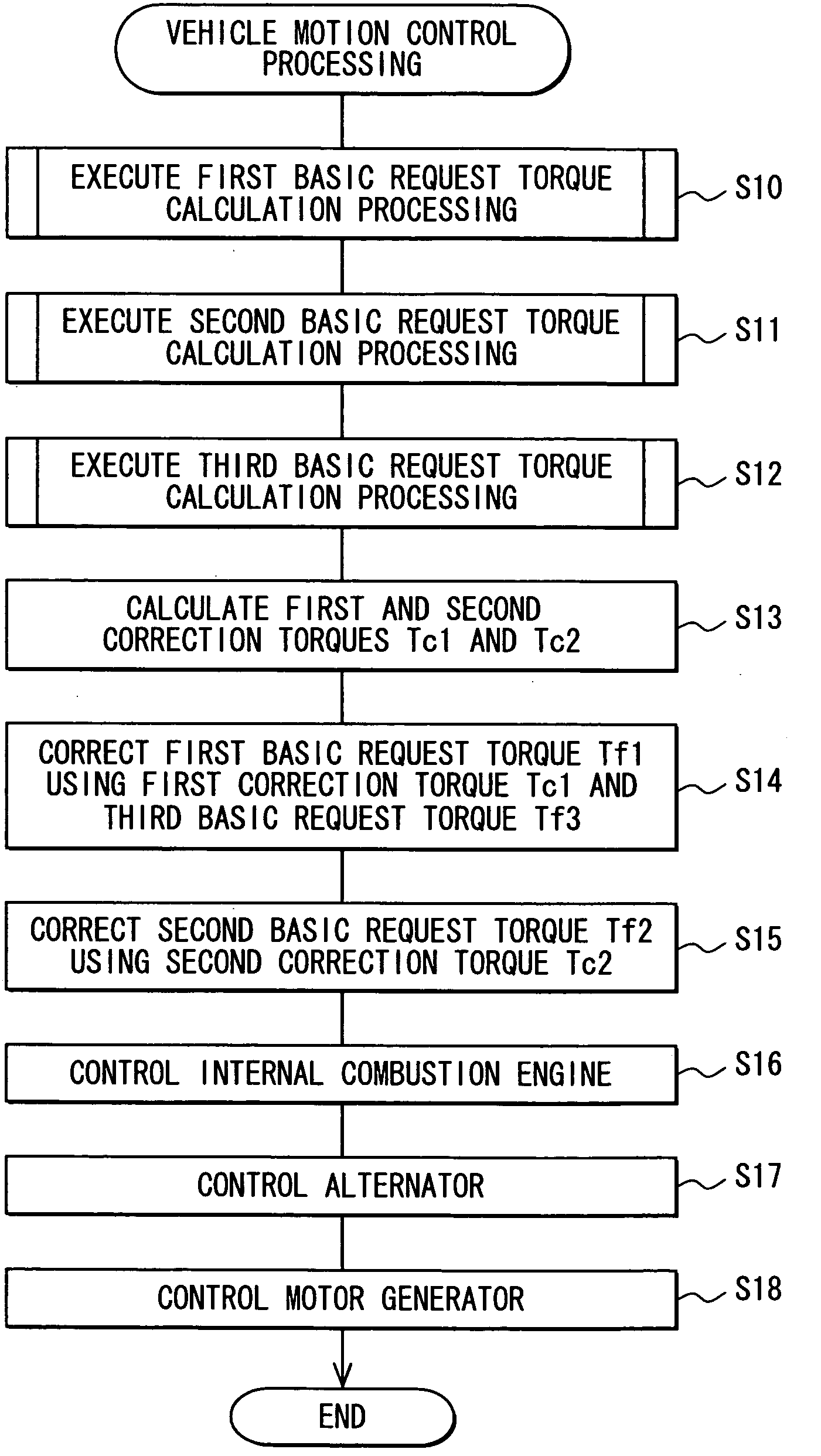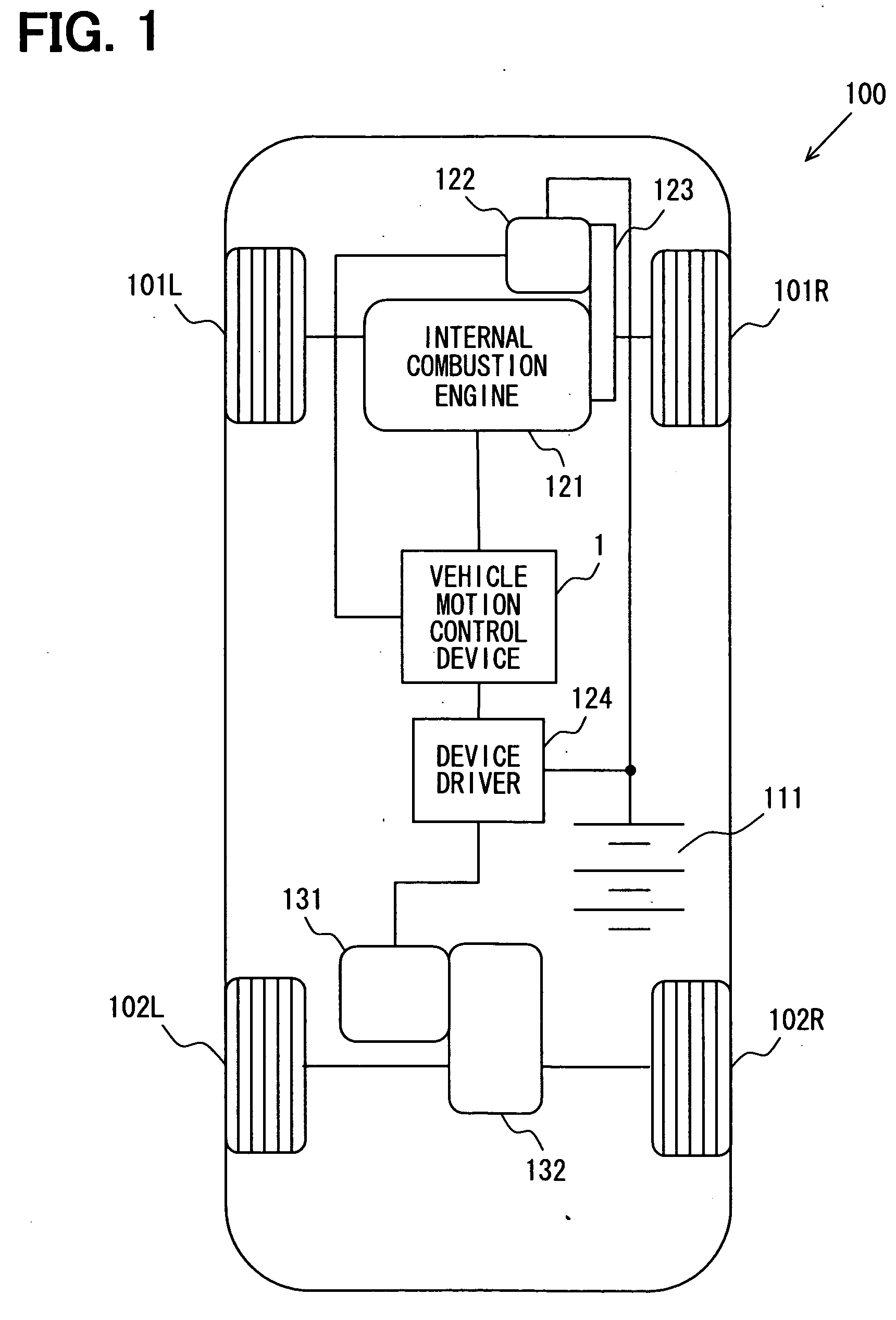Vehicle motion control device
a technology of motion control device and vehicle, which is applied in the direction of vehicle registration/indication, driver input parameters, gas pressure propulsion mounting, etc., can solve the problems of variable vibration of the vehicle, inability to properly and inability to accurately transmit the force to the road through the tires
- Summary
- Abstract
- Description
- Claims
- Application Information
AI Technical Summary
Benefits of technology
Problems solved by technology
Method used
Image
Examples
Embodiment Construction
[0032]Referring to FIG. 1 to FIG. 8, an embodiment of a vehicle motion control device will be described below. FIG. 1 shows an example of the constitution of a vehicle in which the vehicle motion control device of the present embodiment is mounted. The vehicle will first be described.
[0033]A vehicle 100, as shown in FIG. 1, is a four-wheel-drive vehicle, and includes a battery 111 that can act as a power storage means, an internal combustion engine 121 that can act as a first drive assembly, an alternator 122 that can act as a generator or the first drive assembly, a motor generator 131 that can act as a motor, and a vehicle state detection means not specifically shown in FIG. 1.
[0034]The battery 111 is connected to and feeds power to drive various pieces of onboard equipment that are not specifically shown, the various pieces of onboard equipment. The battery 111 is connected to the alternator 122, which can act as a generator as will be described hereinafter, and power, in the for...
PUM
 Login to View More
Login to View More Abstract
Description
Claims
Application Information
 Login to View More
Login to View More - R&D
- Intellectual Property
- Life Sciences
- Materials
- Tech Scout
- Unparalleled Data Quality
- Higher Quality Content
- 60% Fewer Hallucinations
Browse by: Latest US Patents, China's latest patents, Technical Efficacy Thesaurus, Application Domain, Technology Topic, Popular Technical Reports.
© 2025 PatSnap. All rights reserved.Legal|Privacy policy|Modern Slavery Act Transparency Statement|Sitemap|About US| Contact US: help@patsnap.com



